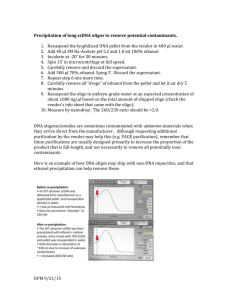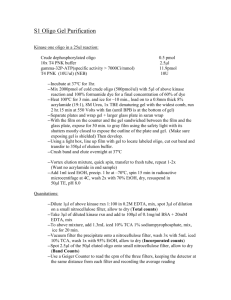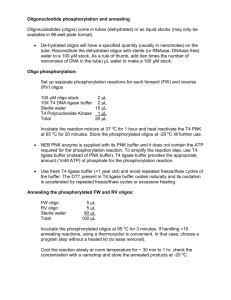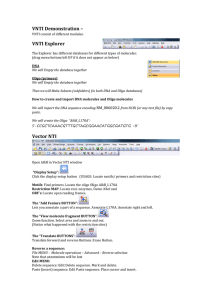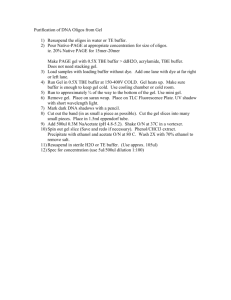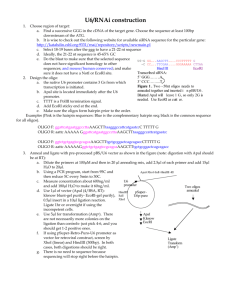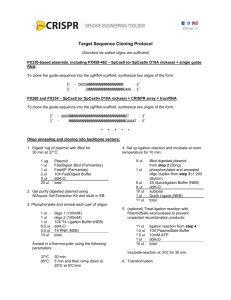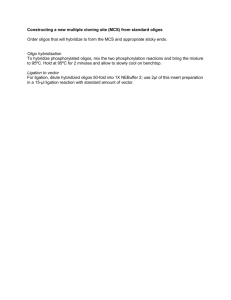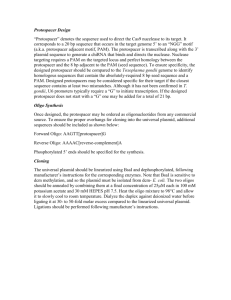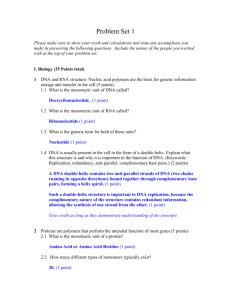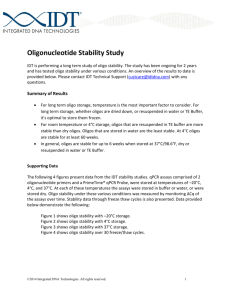S1 Assay Using Oligo Probes
advertisement
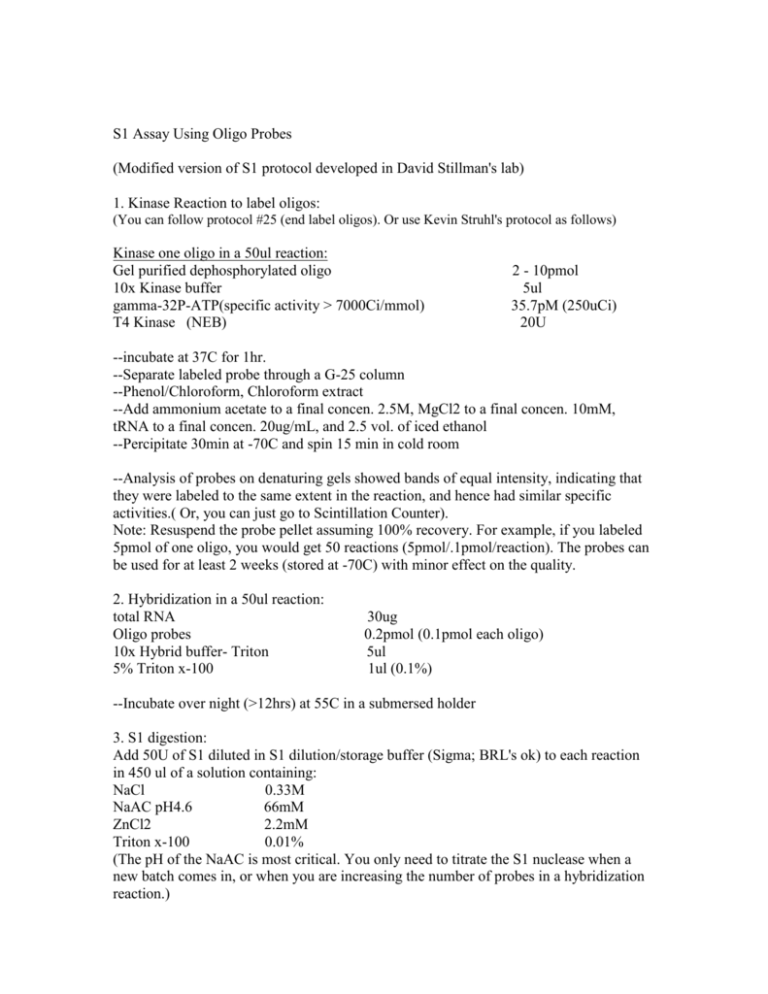
S1 Assay Using Oligo Probes (Modified version of S1 protocol developed in David Stillman's lab) 1. Kinase Reaction to label oligos: (You can follow protocol #25 (end label oligos). Or use Kevin Struhl's protocol as follows) Kinase one oligo in a 50ul reaction: Gel purified dephosphorylated oligo 10x Kinase buffer gamma-32P-ATP(specific activity > 7000Ci/mmol) T4 Kinase (NEB) 2 - 10pmol 5ul 35.7pM (250uCi) 20U --incubate at 37C for 1hr. --Separate labeled probe through a G-25 column --Phenol/Chloroform, Chloroform extract --Add ammonium acetate to a final concen. 2.5M, MgCl2 to a final concen. 10mM, tRNA to a final concen. 20ug/mL, and 2.5 vol. of iced ethanol --Percipitate 30min at -70C and spin 15 min in cold room --Analysis of probes on denaturing gels showed bands of equal intensity, indicating that they were labeled to the same extent in the reaction, and hence had similar specific activities.( Or, you can just go to Scintillation Counter). Note: Resuspend the probe pellet assuming 100% recovery. For example, if you labeled 5pmol of one oligo, you would get 50 reactions (5pmol/.1pmol/reaction). The probes can be used for at least 2 weeks (stored at -70C) with minor effect on the quality. 2. Hybridization in a 50ul reaction: total RNA Oligo probes 10x Hybrid buffer- Triton 5% Triton x-100 30ug 0.2pmol (0.1pmol each oligo) 5ul 1ul (0.1%) --Incubate over night (>12hrs) at 55C in a submersed holder 3. S1 digestion: Add 50U of S1 diluted in S1 dilution/storage buffer (Sigma; BRL's ok) to each reaction in 450 ul of a solution containing: NaCl 0.33M NaAC pH4.6 66mM ZnCl2 2.2mM Triton x-100 0.01% (The pH of the NaAC is most critical. You only need to titrate the S1 nuclease when a new batch comes in, or when you are increasing the number of probes in a hybridization reaction.) --incubate at 37C for 30 minutes. --stop digestion by adding 5 ul of 0.5M EDTA and 5 ul of 10ug/ul tRNA. --ppt. add 1ml of iced ethanol, mix, 45 min at -20C. Spin 15 min in the cold room. --Remove the supenant, dry the pellets by vacuum for 6 min. Resuspend the pellet by pipetting with 6 ul of 60% formamide loading buffer. 4. Gel analysis: --heat samples at 100C for 3 min and place on ice, Load all on an 8% denaturing polyacrylamide gel (0.8mm comb size). Run at 400V for about 3 hrs. (A rule of thumb is when the xylene dye is halfway down the gel, its done.) --fix gel by submerging for 15 min in 10% methanol, 10% acetic acid. --dry the gel at least 1hr. 5. Design of the oligonucleotides: For each RNA to be analyzed, the nt should contain at least 35 residues (up to 70 or higher if you have a good synthesizer) that are complementary to the RNA coding strand. It may be necessary to gel purify oligos to remove failed sequences. You can resolve fragments which are at least 10bp apart. If you don't care about looking at 5' ends, the oligo can be complementary to any part of the mRNA. It's better that the oligos are at least 50% GC with the 5' and 3’ ends being GC(to prevent breathing which might lead to artifactual S1 cleavage). Also, add 6-10 bases at the 3' end of the oligo which are anti-complementary (i.e. purine-purine or pyrimidine-pyrimidine) to the mRNA. The reason for this is to distinguish undigested probe from true mRNA/DNA hybrid. If you care about the 5' initiation site, the oligo is basically the same except that the 3' end should be complementary to RNA beyond the initiation site (this allows discrimination between undigested probe and true hybrid). All hybridization reactions contain at least 2 probes. Special thanks to David Stillman from the University of Utah and his lab for their help in developing this protocol. Ref: Iyer, V. & Struhl, K.(1996) Proc. Natl. Acad. Sci. USA 93, 5208-5212. Buffers: (All buffer components and stock-solutions, except the Tris-stock-solution and the BSA, are DEPC treated and autoclaved) 10x Kinase Buffer: Tris pH7.5 MgCl2 DTT (NEB's fine) 500mM 100mM 50mM 500ug/ml 10x Hybrid Buffer - Triton: (triton won't stay in solution) NaCl 3.0M EDTA 10mM HEPES pH7.0 380mM

